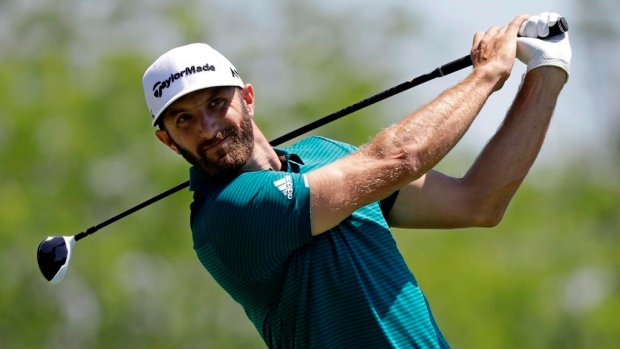Jun 14, 2017
USGA hopes changes will avoid rule snafus
The United States Golf Association is hoping it can learn from last year’s annus horribils at the U.S. Open. But if anything good came out of the debacle, it’s that the USGA has taken steps to avoid a similar problem this year.
By Bob Weeks

The United States Golf Association is hoping it can learn from last year’s annus horribils at the U.S. Open.
You remember last year. . . when Dustin Johnson came down the stretch not knowing whether he would be dinged with a penalty for having his ball move about two dimples on the fifth green even though he clearly didn’t cause the movement?
It was only after his round that he was assessed a stroke penalty, a meaningless one since, even with it, he won by three.
But if anything good came out of the debacle, it’s that the USGA has taken steps to avoid a similar problem this year.
“I think last year there were two things we fell short on,” said John Bodenhamer, the senior managing director of Championships & Governance.
“It took too long to make the ruling and it left uncertainty with the competition. I think should a similar circumstance happen, I think we are poised to move quickly.”
To hopefully clean things up, the governing body has set up four on-course video review stations where tablets will allow for speedy review of any violations that are seen on television. They can be reviewed and a decision made.
Bodenhamer said it may not be to the point where the referee will use the tablet to show the golfer what he did, but he didn’t rule out that possibility.
As well, there is now a chief referee who has the power to make a unilateral decision on any ruling without having to discuss a situation with a committee.
Thomas Pagel, a noted rules expert and a decent guy to boot, has been given the rules crown to wear.
Another change the USGA made is to move to a stationary referee model. In past Opens, there’s been one referee walking with each group, ready to jump in for a ruling when needed. While there will still be some roving officials, the referees will now be stationed at holes where they can be familiar with the trouble points and be ready for repeating situations.
“We asked ourselves why do we have walking referees and we answered that question and really transitioned to this model because it's best for the championship, the players and the fans,” said Bodenhamer.
Now the rule that caused all the problems last year won’t be an issue this time around because it’s essentially been eliminated. The USGA has adopted a local rule that basically says if the ball moves while you’re around it and you didn’t cause it to move, just put it back and play on. Smart, that is, but unfortunately just a little late.
The one issue that hasn’t been changed, however, is that those lumps sitting at home can still call in to point out a rules violation. Bodenhamer said there’s a working group in place to study this one and a decision should be forthcoming.
Of course common sense would seem to indicate that if you have a horde of well-educated rules referees on every hole and some honest players, there really shouldn’t be any need for a beer-swiling, chip-eating guy in Walla Walla to point out a problem.
That situation will need to wait for another day. For now, let’s at least give the USGA some credit for reacting and making what they hope are improvements.
“These and other steps that we've implemented we think will allow us to really expedite our rule-making process and be decisive in our communications, which were two things that perhaps we fell a little bit short last year,” Bodenhamer stated. “But we're committed this year to expedite it and we're excited about it.”
If this year runs smoothly, there may actually be a lot less excitement and when it comes to rules, that’s a good thing.
